Winter viewing: Vinegar Syndrome
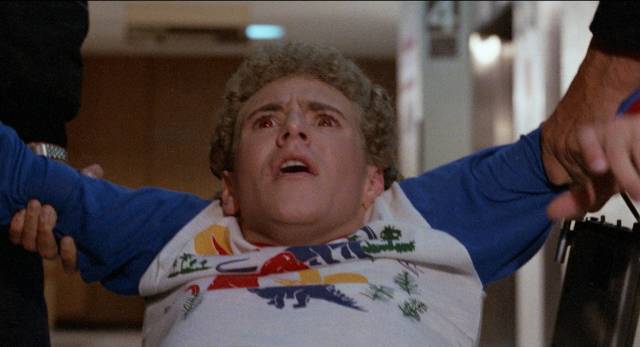
In a recent post, I wrote brief comments about seventeen movies I watched over Christmas and New Year. I was a bit disingenuous, because I may have given the impression that they were all I watched. Well, there was a lot more over the holidays and the few weeks following and here I offer some even briefer comments on some of the others – specifically releases from Severin and Vinegar Syndrome, two companies to which I lately find myself inordinately addicted. The big problem (for someone like me) is that both offer their monthly releases in discounted bundles; if there are a couple of titles I’m interested in, I’ll order the entire bundle. They also have regular sales, which trigger a frenzy of consumption in me. Most of what I mention below came from their Black Friday sales and subsequent monthly bundles, so they’re a mixture of new releases and back catalogue titles.
Vinegar Syndrome
Vinegar Syndrome is tailored to fit my taste for trash and exploitation perfectly, but I have to admit that the sheer volume of my purchases does result in a noticeable degree of disappointment, even with expectations adjusted. The majority of these releases are action and horror and for some reason most of them are from the ’80s, with just a few from preceding and subsequent decades.
The 1970s
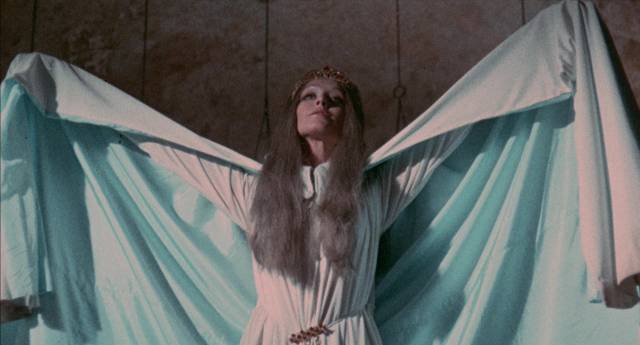
I was way too late to get a copy of the limited edition Drive-In Collection Blu-ray, so had to settle for the DVD of this double-bill. Although neither movie is particularly memorable, the disk does evoke the nostalgic experience of a grindhouse program. In Crypt of the Living Dead (Ray Danton/Julio Salvador, 1973), Andrew Prine (sporting a disconcerting porn moustache) travels to a remote island where his father has died in a freak accident, crushed by an ancient sarcophagus. Against the advice of the locals, he insists on moving the heavy stone container, unleashing an ancient female vampire. Meanwhile, in House of the Living Dead (Ray Austin, 1974) twin bothers run a colonial estate in South Africa, one nice, one nasty (physically deformed for good measure). The bad twin is doing experiments in which he captures souls in jars – never a good idea.
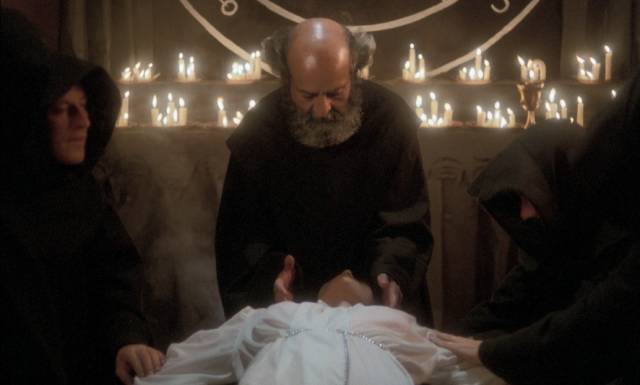
Satan’s Blood (1977), directed by Carlos Puerto and produced by Juan Piquer Simon, is one of those Eurotrash movies which uses vague horror content to justify extensive soft-core sequences. Jean Rollin was the master of the form because he was able to strike a balance between the requirements of both genres and infused the horror with poetry which in turn supported the eroticism. Puerto’s movie just plods along aimlessly, following a middle class couple who are invited by another couple to a remote country house, where they are drawn into black magic rituals and group sex. There are some effectively creepy moments, but things stop dead for the sex scenes. (Commentary by Samm Deighan and Kat Ellinger, 45-minute making-of)
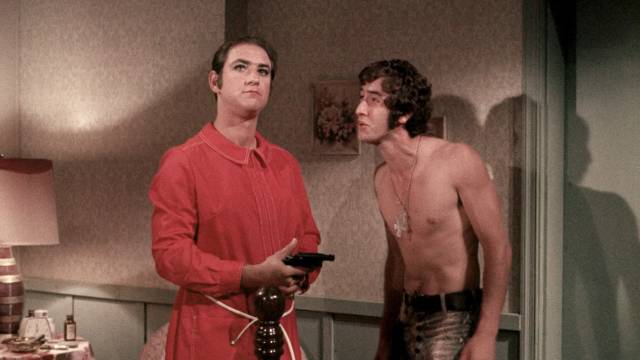
Sometimes Aunt Martha Does Dreadful Things (1971) is a whole other kettle of fish. Made in Florida on an obviously low budget by writer-director Thomas Casey (his only feature), it continually defies expectations on every level. A pair of crooks are living incognito in the suburbs where neighbours both friendly and nosy are constantly on the edge of discovering their unsavoury secrets. There’s beefy Stanley (Wayne Crawford), who has serious hangups which involve picking up women and having sex which triggers violent inner conflicts. Then there’s his Aunt Martha – who is actually a guy named Paul in drag (Abe Zwick), which somehow the neighbours never figure out. The pair have a very complicated co-dependent relationship which produces escalating levels of violence. Perhaps the strangest thing about the movie is that it treats all the sexual/gender implications with a completely matter-of-fact attitude; there are comic touches, but no outright camp or mockery. This is a real fringe cinema find. (Commentary by queer-film historian Evan Purchell and Bret Berg, several gay-themed shorts)
*
The 1980s
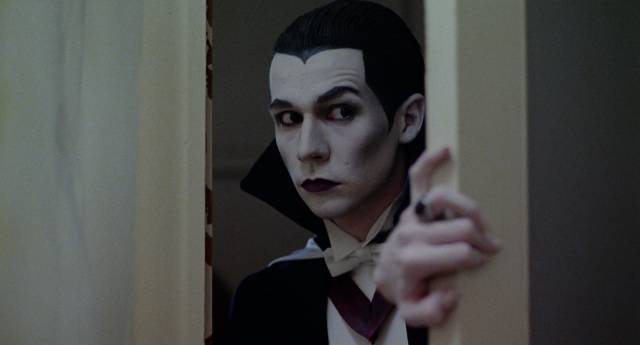
I don’t think I saw Vernon Zimmerman’s Fade to Black (1980) when it came out, though the central idea would have appealed to me. Nerdy Eric Binford (Dennis Christopher), tormented at home by his wheelchair-bound aunt (unknown to him, actually his mother) and by his co-workers in the film distribution company where he works, he spends all his time immersed in the movies – he watches them, he talks about them, he fantasizes that his life is happening on-screen – and when he can’t take the real-world stress any more, he acts out scenes and characters to exact revenge, committing a series of murders rooted in his favourite movies. A decent idea, but somehow it never gels. Zimmerman can’t seem to put us inside Eric’s head and watching him from outside he annoys us as much as he does the people around him. (No less than three commentaries and multiple interview featurettes)
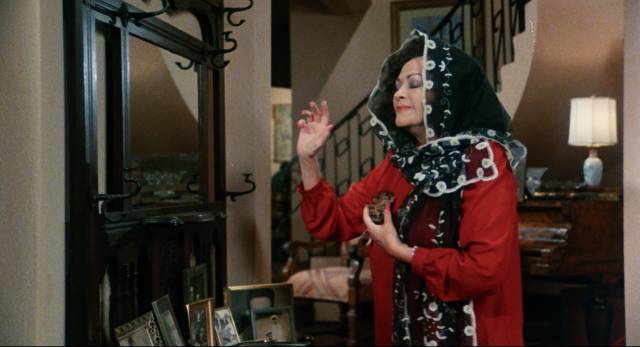
Play Dead (1982) is low-budget regional horror from Texas, directed by Peter Wittman and starring none other than Yvonne De Carlo, Lily Munster herself, as a bitter rich woman who has never gotten over the fact that her sister stole her boyfriend decades ago. Now, with her sister freshly dead, Aunt Hester sets out to kill her niece and nephew and anyone else who gets in the way, essentially erasing the family which should have been her own. To carry out her plans, she uses black magic and what may be the least threatening Rottweiler ever to appear on film. Talky and full of scenes which lead nowhere, what could have been cheesy fun (think Curtis Harrington’s Devil Dog: The Hound of Hell [1978]) remains steadfastly dull, with De Carlo never fully embracing the hag-horror potential. (Brief interviews with Wittman and co-star Stephanie Dunnam)
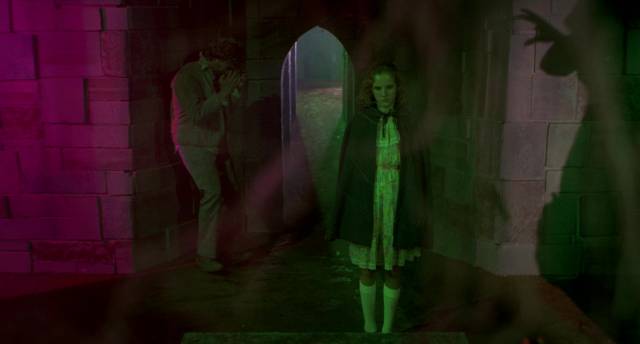
Michael Dugan’s Mausoleum (1982) is as generic as its title, though it does benefit from some elaborate make-up effects courtesy of John Carl Buechler. Not surprisingly there’s an ancient curse on the Nomed family (don’t say it backwards!), and now it’s time for Susan (Bobbie Bresee) to channel evil and kill off a bunch of people in elaborate ways (in one instance involving man-eating breasts). It has its moments, but it’s no One Dark Night or Phantasm. (Interview with Buechler)
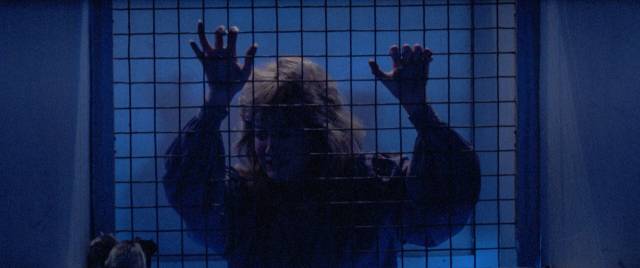
By 1984 slashers had already become tediously formulaic and the brief 3D revival was virtually over, so Simon Nuchtern’s Silent Madness apparently failed to gain much market traction. Restored and released by Vinegar Syndrome as their first 3D disk (with both digital and anaglyph options so I didn’t have to wait for the end of the lockdown to see it at my friend Steve’s), the movie turns out to be much better than expected. A clerical error leads to the inadvertent release of the homicidal Howard Johns (Solly Marx) from an institution for the criminally insane. While the administration strives to conceal their mistake, new doctor Joan Gilmore (Belinda Montgomery) heads to the small college town where Howard committed his crimes. In a race against time, and with no help, she tries (and fails) to stop another bloodbath, becoming a target herself. The cast is better than it needs to be (including none other than Viveca Lindfors looming over the sorority house as a strict, religious den mother), with Montgomery a very appealing heroine. The 3D is very good, with an effective use of compositions in depth and some nice poke-in-the-eye moments. (Two-disk set with three viewing options – digital and anaglyph 3D, plus flat – two commentaries, 45-minute making-of, additional interviews, location featurette and 3D sizzle reel)
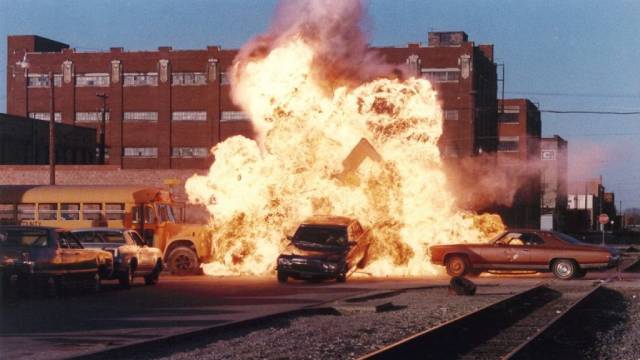
Though less single-minded in its vehicular mayhem than the movies of H.B. Halicki, Action U.S.A. (1988) was devised by stuntman-turned-director John Stewart as a showcase for his action skills. When her drug-dealer boyfriend is killed by Frankie Navarro (Cameron Mitchell)’s henchmen, Carmen (Barri Murphy) becomes a target– the gangster is looking for a stash of diamonds the boyfriend hid somewhere in Texas and he thinks she knows where it is. A buddy-cop duo of FBI agents (Gregory Scott Cummins, William Hubbard Knight) take her into custody and head for the Texas border with the bad guys in pursuit. There are two problems – they’re not good at their job, and someone is tipping off Navarro every step of the way. With the great William Smith in a small role as their boss, it’s no surprise who’s betraying them. There’s a lot of action, lots of dangerous stunts and large-scale destruction, but the thin story remains rather slack and unengaging. (Cast and crew commentary, conversation between Stewart and Brian Trenchard-Smith, and interview with co-star Cummins)
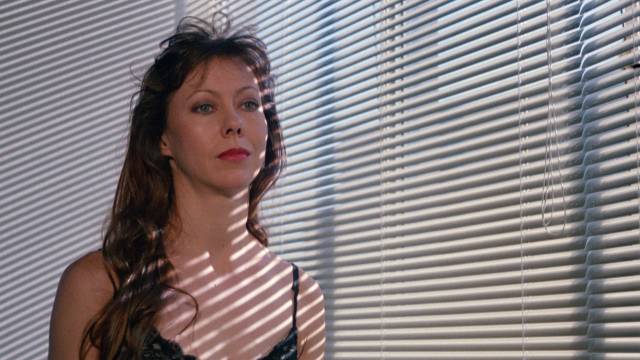
Producer Sandy Howard did more than his share of schlock, with an occasional notable project thrown in (Elliot Silverstein’s A Man Called Horse [1970], Penelope Speeris’ The Boys Next Door [1985]). Dark Tower (1988) is neither the best nor the worst. Credited to “Ken Barnett”, it was directed partially by Freddie Francis and partially by Ken Wiederhorn. It’s hard to say who did what, but it doesn’t seem much like Francis’ other work – though he does appear in a brief cameo. Jenny Agutter is a workaholic architect supervising completion of an office tower in Barcelona. When a series of strange deaths begins occurring, security guy Michael Moriarty investigates and gradually comes to realize there’s a malevolent supernatural force at work. The cast – Agutter, Moriarty, Carol Lynley, Theodore Bikel, Kevin McCarthy – give the movie a bit of class, but the direction lacks pace. Moriarty’s presence makes you wonder what Larry Cohen might have done with it. (Interview with make-up effects artist Steve Neill)
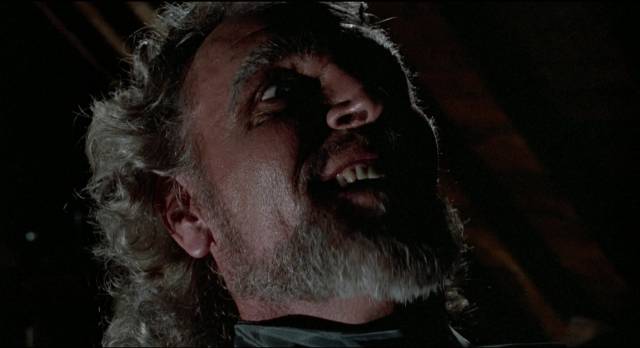
I’ve had a bit of a soft spot for Kevin Tenney ever since I saw his first feature, Witchboard (1986), in the theatre. That was the beginning of a loose trilogy about people unwittingly releasing the forces of evil – followed by Night of the Demons (1988) and Witchtrap (1989). I hadn’t seen the latter before, but it’s on a par with its predecessors, though it edges towards self-parody. An evil magician lingers on in the mansion he once inhabited and the new owner hires a team of psychic researchers to investigate and hopefully clean out the bad vibes so he can open a bed-and-breakfast. Their presence raises the ire of the magician and people start to die in gruesome ways, with Tenney orchestrating the mayhem with his usual efficiency. (Cast and crew commentary, additional interviews, plus Tenney’s first short film)
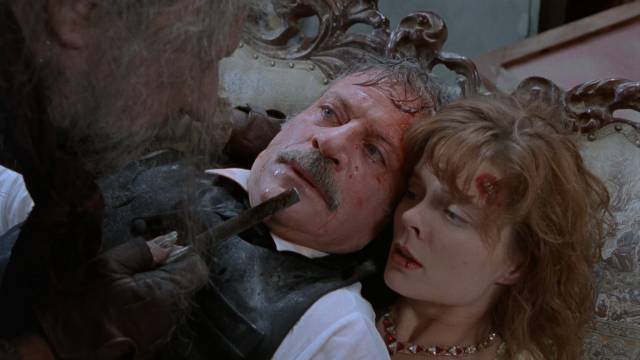
crazy Walter Usher (Donald Pleasence)in Andrew Birkinshaw’s The House of Usher (1989)
Alan Birkinshaw is a very minor figure, perhaps best known for his second feature, Killer’s Moon (1978). I didn’t expect a lot from The House of Usher (1989), which is often the best way to see a movie like this. The big draw is the presence of Oliver Reed and Donald Pleasence as the Usher brothers, the tail end of a noble British family plagued by hereditary madness, living in a rambling old country house full of secret passages and seemingly endless cellars, taken care of by a pair of sinister servants and their mute teenage daughter. Ryan Usher (Rufus Swart) is bringing his American fiancee Molly (Romy Windsor) to visit Uncle Roderick (Reed) when their car crashes avoiding a pair of ghostly children on the road. Molly makes it to the house in shock, eventually informed that Ryan is dead. But it’s all a plot by Roderick, who buries Ryan alive in the family crypt so he can have Molly for himself and produce an heir. Things go more awry when brother Walter (Pleasence) escapes from the attic and starts bumping people off. It’s all ridiculous and campy and whether consciously or not seems heavily influenced by Ken Russell’s The Lair of the White Worm, made the previous year. Reed and Pleasence make it quite a lot of fun. Writer Michael J. Murray, whose first script this was, went on to a rather alarmingly prolific career producing scripts for Christmas movies. (Brief interview with Birkinshaw)
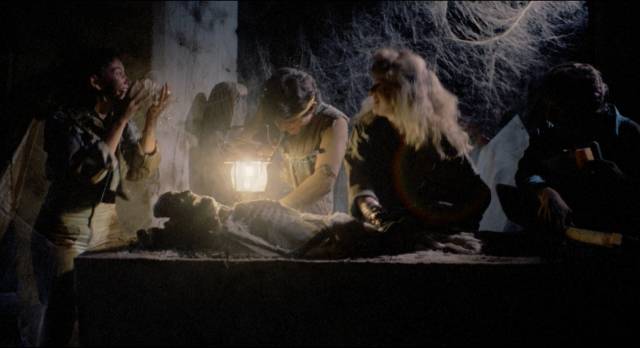
Following my recent exposure to Mexican director Alfredo Zacarias, here comes another Mexican filmmaker with a trio of supernatural horrors. Ruben Galindo Jr.’s Cemetery of Terror (1985), Don’t Panic (1988) and Grave Robbers (1989) have been given lavish attention by Vinegar Syndrome, with 4K scans from original negatives. In the first and third, groups of teenagers mess with the dead, awakening angry killers – in one they steal a body from the morgue as a prank, in the other they open graves looking for stuff they can sell. Both films are comfortable with being Mexican, while Don’t Panic obviously aims at the U.S. market, shot in English with American characters living in Mexico; this is another precautionary tale about what happens when you mess with a Ouija board at a birthday party, with Michael (Jon Michael Bischof) becoming possessed by a murderous spirit. Galindo knows his horror tropes and the Mexican settings give them a bit of freshness. (Commentaries and interview featurettes)
*
The 1990s
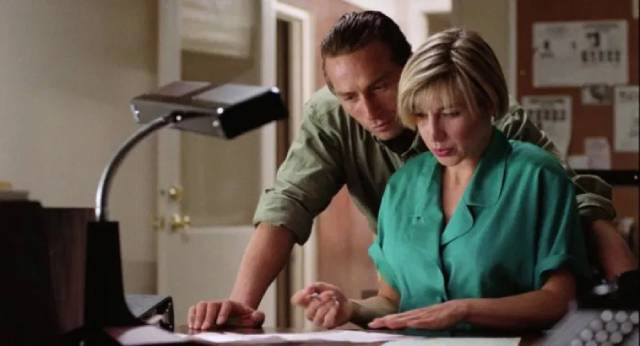
in Steve Cohen’s Martial Law (1990)
Martial artist Cynthia Rothrock launched a movie career by appearing in a string of Asian movies in the second half of the ’80s, from Corey Yuen’s Yes, Madam! (1985) to Lau Kar-wing’s Miao tan shuang long (1989), before bringing her fighting style back home in the ’90s. Both Steve Cohen’s Martial Law (1990) and Kurt Anderson’s Martial Law II: Undercover (1991) are routine cop B-movies into which martial arts are injected – a sometimes awkward fit when the heroes are pitted against gun-toting bad guys. Rothrock plays Billie Blake, who along with partner Detective Sean Thompson (Chad McQueen in the first movie, Jeff Wincott in the second) has to step outside the law to take on the villains – David Carradine as a deadly martial arts master who hides his criminal activities behind his dojo and Paul Johansson as a rich jerk who runs an illicit business out of his popular nightclub. Plots are perfunctory, existing merely to provide the pretext for Rothrock to kick ass. (Two-disk set with making-of featurettes and some silent outtakes)
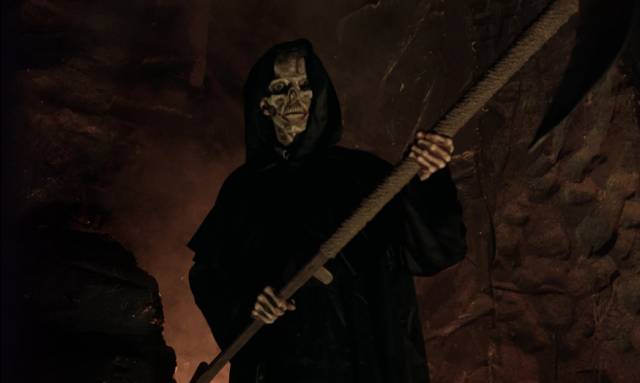
Having enjoyed Juan Piquer Simon’s Slugs (1988), I keep hoping to repeat the experience. His slasher Pieces (1982) has a reputation among fans, though I found Paul L. Smith’s performance distractingly hammy. I recently watched his follow-up to Slugs, The Rift (1990), which has its moments – Ray Wise and R. Lee Ermey are always worth watching. But I’m afraid my hopes were too high for Cthulhu Mansion (1992). The potential was there, but the execution is quite leaden. After stealing some drugs, a bunch of obnoxious punks escape from a fun fair by forcing their way into the car of sideshow magician Chandu (Frank Finlay). Along for the ride are his daughter and stage assistant Lisa (Marcia Layton) and mute servant Felix (Frank Brana). With the roads blocked, they seek a temporary hideout in Chandu’s mansion, despite his trying to explain that it’s a bad idea. Once there, things begin to go wrong; Chandu made a deal with evil forces years ago (resulting in the gruesome stage death of his beloved wife Lenore, Lisa’s mother, also played by Layton). With the gang carelessly messing with Chandu’s stuff, a doorway is opened to the other side and people start to die or turn into monsters. But it all takes so damn long as we sit through scenes which keep repeating what we already know … and despite the title, no effort is actually made to link any of this to H.P. Lovecraft’s mythology. (There’s an interview with make-up effects artist Colin Arthur and, another disappointment, a feature-length documentary about Simon’s career which has to have the worst subtitles I’ve ever come across – they appear to have been generated by running the Spanish through Google Translate and they flash by so fast it’s virtually impossible to deduce what the garbled English is supposed to mean)
Next: Severin releases
Comments